Celaya, Guanajuato 作者: 来源: 发布时间:2021-03-22
1. Basic data
Pop: 468,469 (munip.)
Area: 553.18 km2
Elev: 1,767 masl
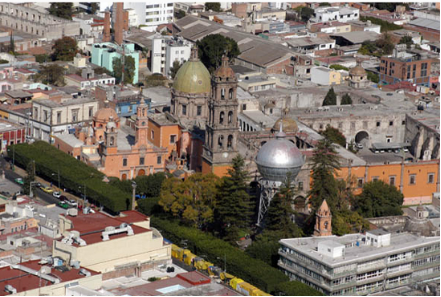
Celaya location in Mexico within the State of Guanajuato
https://goo.gl/maps/FcXpFuBNHsy6GMZM8
2. Natural geography
Orography
The territory includes the plain within the Guanajuato Bajío region, it is limited to the north, by foothills of the Sierra de las Gallinas (known locally as Sierra de Comonfort); to the northwest, by the Cerro de Jocoque (or Xocoqui); to the southeast, by the mountains of Apaseo el Alto and by Cerro Pelón; and to the southwest, by the mountainous system of La Gavia. All of the above with average heights above sea level of 2000 meters.
Hydrography
The municipality is crossed by the Laja River, a tributary of the Lerma River, which is fed by the Querétaro River, practically the entire territory of the municipality of Celaya belongs to the Laja River Basin, with the exception of a small sector of the extreme south that belongs to the River Lerma - Salamanca Basin, both from the Lerma-Santiago hydrological region.
The main hydrological current of the municipality is the Laja river, which is born in the municipality of San Felipe, runs through Dolores Hidalgo and San Miguel de Allende, penetrates through Comonfort through the north of the municipality of Celaya and flows through the east of the city , crossing it longitudinally from north to south; from there it turns west to flow into the Lerma river.
Two aquifers are exploited in the Celaya area, a lower thermal one with a temperature of around 40 ° C, formed by volcanic tobaceous deposits of the river-eolithic type. The upper aquifer is cold and consists of a stratified lacustrine sediment packet and basaltic volcanic rock spills. In most of the area, both aquifers act together due to the lack of a confinement that separates them.
Flora
The municipality is located in the Neotropical kingdom in the Mexican Xerophytic region and in the provinces known as Mesa Central and Eje Neovolcánico.
Fauna
Mexico is a country that is also distinguished by having a high proportion of species exclusively within its territory (endemic species); more than 17% of vertebrate species are endemic; the herpetofauna is distinguished with 60% of amphibians and 52% of reptiles. The state of Guanajuato ranks 28th in terms of richness of endemic Mesoamerican vertebrates and 25th with respect to state endemics. As for mammals, there are 51.6%, 38.46% reptiles, 25% amphibians, 19.18 arthropods and 22% fish. To have a better understanding of the fauna of the region, it was divided into the following categories: Domestic fauna, Noxious fauna, Original wild fauna Wild fauna that has adapted to human conditions and subsists despite changes in their natural habitat, such as This is the case of birds (sparrows, pigeons), mammals (squirrels and moles have been seen in some regions of the city) and some reptiles (lizards), but with greater emphasis on wildlife, as this is the one with the greatest ecological value .
Weather
Köppen Classification: Mid-Latitude Steppe and Desert Climate
This climate type is characterized by extremely variable temperature conditions, with annual means decreasing and annual ranges increasing poleward, and relatively little precipitation. This climate is typically located deep within the interiors of continents and is contiguous with the tropical desert climates of North and South America and of central Asia. This region type owes its origins to locations deep within continental interiors, far from the windward coasts and sources of moist, maritime air. Remoteness from sources of water vapor is enhanced in some regions by mountain barriers upwind.
The Köppen Climate Classification subtype for this climate is "Bsh". (Mid-Latitude Steppe and Desert Climate).
The average temperature for the year in Celaya is 66.2°F (19°C). The warmest month, on average, is May with an average temperature of 72.3°F (22.4°C). The coolest month on average is January, with an average temperature of 58.6°F (14.8°C).
The highest recorded temperature in Celaya is 102.2°F (39°C), which was recorded in March. The lowest recorded temperature in Celaya is 23.0°F (-5°C), which was recorded in February.
The average amount of precipitation for the year in Celaya is 24.4" (619.8 mm). The month with the most precipitation on average is July with 5.6" (142.2 mm) of precipitation. The month with the least precipitation on average is February with an average of 0.3" (7.6 mm). In terms of liquid precipitation, there are an average of 72.9 days of rain, with the most rain occurring in July with 14.4 days of rain, and the least rain occurring in February with 1.4 days of rain.
https://www.weatherbase.com/weather/weather-summary.php3?s=911009&cityname=Celaya%2C+Guanajuato%2C+Mexico&units=
Getting there and around
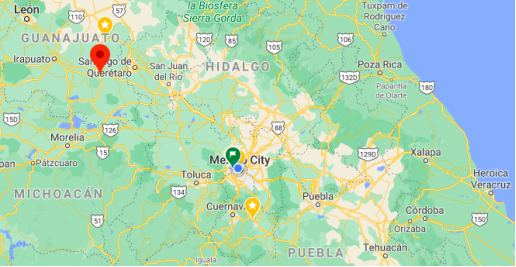
Get there
By Bus – The cheapest way to get from Mexico City to Celaya is to bus which costs $370 - $500 and takes 4h 26m. There are services departing from Izazaga in Mexico City metro area and arriving at Celaya via México Central Norte. The journey, including transfers, takes approximately 5h 24m.
There is a direct bus departing from Querétaro and arriving at Celaya. Services depart hourly, and operate every day. The journey takes approximately 2h 10m.
By car - The cheapest way to get from Santiago de Querétaro, one of the closest cities, to Celaya is to rideshare which costs $62 and takes 51 min.
https://www.rome2rio.com/s/Mexico-City/Celaya
https://www.rome2rio.com/s/Santiago-de-Quer%C3%A9taro/Celaya
Get around
Taxis – Taxis in most of Mexico’s colonial towns and cities are not metered, so agree your price before you get in. Taxi travel is very affordable in Mexico, in comparison to the USA, Canada and Europe, and so provides a viable means of public transportation in Mexico. Your hotel can arrange taxis for you; some post their rates on a board in the lobby; taxi hotel rates are usually higher than cabs you hail off the street. If you speak Spanish, you will have a distinct advantage and be able to negotiate a price with the driver.
In the center of the city it is common to walk to avoid traffic and finding parking spaces.
By Bus – Celaya’s renovated bus transportation system routes: https://www.celaya.gob.mx/RutasTransporte. You need to speak Spanish to ask for directions or instruct the driver to leave you at a specific point. Also, keep yourself around the central and touristic areas of the city.
Route maps: https://www.celaya.gob.mx/RutasTransporte/RutasMejoradas.pdf
Uber is expanding rapidly across Mexico and now offers services in cities across the country, including: Mexico City, Toluca, Cuernavaca, Puebla, Querétaro, León, Aguascalientes, San Luis Potosí, Guadalajara, Monterrey, Hermosillo, Tijuana, Mexicali, and Mérida. Uber has been adding Mexican cities to its network every year, check for availability when you arrive at your destination in Mexico.
Cabify is developing also and currently operates in cities including Mexico City, Toluca, Monterrey, Puebla, Querétaro and Tijuana. Check for availability in the city you are visiting.
The services offers people with smartphones a way to book a cab through a mobile app for a pre-agreed price. Fares are comparable with Sitio type cabs (see above), and sometimes trade at a premium to this when local demand increases.
https://www.mexperience.com/transport/taxi-travel-in-mexico/#51
https://www.mexperience.com/travel/colonial/san-miguel-de-allende
3. GDP: 3784 M USD
4. Industry
Celaya is known as the Golden Gate of the Bajío thanks to the economic development in the Bajío region, a consequence of its geographical location that links it with the cities of Querétaro, Guadalajara and Mexico City, and with those that make up the so-called industrial corridor of the state of Guanajuato (León, Salamanca, Irapuato and Silao).
The region has historically been a land of passage, located at the crossroads of trade routes to the north and west of the country; highlighting being a connection point to the strategic markets for international trade: Manzanillo, Lázaro Cárdenas, Tampico-Altamira. Contributing with it, to the increase of business tourism. Historically, the productive activities of the primary sector had been the engine of development in the region; However, the industrial, commercial and service vocation has taken a greater leadership in terms of the regional economy, contributing to its diversification. Highlighting sectors such as automotive, food, plastics and agri-food. Celaya is the second largest exporting municipality in the State.
Its state contribution to the Gross Domestic Product (GDP) is in the third position, after León and Irapuato, with an amount of three thousand 748 million dollars.
The main economic activities are the manufacturing industry (52.3% of the local GDP), the services sector (26.09%) and commerce (16.6%). The largest agronomic activities are made up of the cultivation of corn, alfalfa and sorghum, and the rearing of cattle and goats.
The main manufacturing industries are related to the manufacture of electrical appliances, power generators, pharmaceuticals, household appliances, auto parts and cardboard packaging.
The industrial composition, its agricultural resources and its communication infrastructures have attracted in recent years industries in the mechanical, electrical appliances, steel, chemical, and food processing areas.
According to the Urban Competitiveness Index, Celaya is ranked 23rd at the national level, in the stable economy sub-index prepared by the Mexican Institute of Competitiveness (IMCO), above cities such as León, Toluca, Morelia, Irapuato, Cuernavaca, Pachuca, among others. This index measures the capacity to attract and retain talent and investments of the 74 most important cities in the country. At the same time, the World Bank considers it the third Mexican city with the best and fastest conditions for opening businesses.
Violence in Celaya: The wave of violence in Guanajuato portrays the ineffectiveness of the National Guard
Andrés Manuel López Obrador is in Guanajuato this Wednesday. It is the first stop on a tour of the areas where homicides have soared the most in the general wave of violence that the country is experiencing. Guanajuato, a traditionally peaceful and prosperous state of the interior, could well be considered the laboratory of the security policies of the Government of Morena, the president's party. The entity is suffering the rise of a relatively different violence: a local cartel fighting for the fuel loot and the plundering of the local economy; authorities in the crosshairs of the federal prosecutor's office - the state prosecutor has been in office for 11 years - and, above all, one of the largest deployments of the National Guard, the Government's flagship security measure.
Guanajuato registers one of the largest increases in the deployment of the National Guard so far this year. The same period in which the entity has reached a rate of 75.5 murders per 100,000 inhabitants, the fourth worst in all of Mexico and higher than that of El Salvador (2017), one of the most violent nations in the world. Other states that register strong increases in the presence of the security forces are Aguascalientes and Oaxaca, with a considerably lower incidence of violence. Paradoxically, Colima and Jalisco, the other two stops of the president during his tour of the red lights, are in the last positions of the growth of troops.
The presence of López Obrador in Irapuato - the most violent municipality in Guanajuato - this Wednesday has had the main objective of resolving, at least in the face of an indignant Guanajuato society, the discrepancies with the state governor, Diego Sinhue Rodríguez. The two governments (federal and state) have been fighting for months over their strategy to fight crime and the only result has been the same: homicides continue to rise, from January to May of this year 1,405 murders have been registered. Just one day before the president's visit to the entity, 17 people were killed. Both López Obrador and Rodríguez have announced "better coordination" after the meeting in Guanajuato. Well, despite the large and striking recent operations against drug trafficking, there is no accused for organized crime.
The analysis of the Ibero-American University affects the controversial military delivery of public security and asserts that “a year after its creation, it is difficult to distinguish where the Sedena (Secretary of National Defense) ends and where the National Guard begins. Until now there is no explicit and public route to implement their true separation ”. They base their conclusions on the fact that from the command - "a general of the General Staff, nominally subordinate to the secretary of the Ministry of Public Security, but in practice subordinate to the Sedena" -, the culture, the organization - only 20% of personnel come from of the Federal Police, and 17% of new recruits, the training, the equipment and the deployment of the personnel, everything is properly military.
Academics and civil organizations have stressed from the beginning that the model chosen by López Obrador represents a deepening of the militarization of police work initiated in 2006 by Felipe Calderón. And they also denounce the opacity with which the new body has been deployed. "Since last year," adds López Portillo, "we have requested through the formal channels of information requests the development plan of the National Guard. They have been denied to us. In this way we do not know how it works, with what indicators it is displayed and what are the success criteria of the body ”. For now, a year after its implementation, Mexico continues to break historical records of violence.
Article from El País: https://elpais.com/mexico/2020-07-15/la-ola-de-violencia-en-guanajuato-retrata-la-ineficacia-de-la-guardia-nacional.html
5. Touristic sites
Convento y Templo de San Francisco
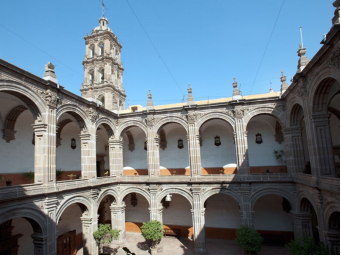
Inside the temple you can see the baroque style and its neoclassical façade, the construction dates from 1683, it is also worth mentioning that it is one of the largest in the Mexican Republic. At the time of the Mexican Revolution, it was used as a barracks. In addition, it housed a university in its convent. It is the second temple nationwide to house the Immaculate Conception, whose feast is celebrated every December 8.
The facade of the convent, in Plateresque style, is on two levels with pilasters decorated with gargoyles; the interior patio is delimited by a semicircular arcade on molded pilasters and those on the second level are topped by faces that stand out from among the foliage. Inside you can see the baroque style of the seventeenth century.
It is sometimes confused with the Cathedral of Celaya, as they are located next to each other on the Calzada de la Independencia in the city.
It is one of the most famous temples in Celaya, next to the Cathedral of Celaya and the Temple of Carmen.
This temple was rebuilt between 1683 and 1715. In December 1577, Martín de Ortega and his wife María Magdalena de La Cruz, one of the first founders of Celaya, donated the image of the Immaculate Conception, brought from Spain.
On October 12, 1909, by the grace of Pius X, she was crowned by Archbishop Atenogenes Silva.
Independence Column
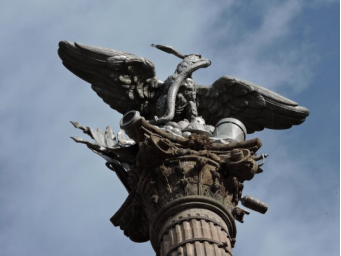
Work of Tresguerras, it was the first sculpture at the national level erected to pay homage to the Independence of Mexico. In 1822, it was built in the garden of the Historic Center. During Tresguerras' life, it was the most controversial sculpture in its time, since it was the first monument erected to the independence of Mexico without having yet been consummated and promulgated; being classified by his contemporaries as "the brave architect." This data can be based on the fact that it was made for King Carlos IV, and thus celebrate his coronation; However, as soon as independence was consummated, the people threw themselves to throw away the effigy of the King, an act that the architect totally rejected; and later he was hired to put an imperial eagle on the top of the column, in doing so he put it with his back to the Casa del Cabildo, today municipal presidency; and in a fit of irony he said that "The Eagle symbol of the country does not deserve to see the filth that is made in that pigsty." In 1964, plans were rumored to return the sculpture to its former place, given the complaints of the citizens, declaring that the kiosk that was installed had no merit or historical value; however, it was never relocated, simply upgrading an underground luminaire to its site.
Ball of Water
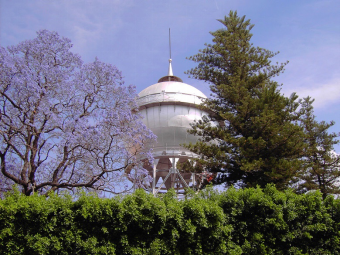
The Ball of Water reservoir has been a city icon since 1908; it continues to supply water to portions of downtown. The tank was manufactured in Germany and assembled on site, and is unique in being assembled using rivets rather than welds. It is believed[by whom?] to be the only one of its kind with a spherical shape (it is rumored[weasel words] that there was another similar water ball in Stuttgart, Germany that was destroyed during the Second World War). Traditionally, locals tell visitors that it is filled with cajeta, taking them to visit the "Bola del Agua" on Sundays, the traditional day for visiting the Independencia Lane.
The work was carried out under the command of German Enrique Schöndube, although it is known that payment for the construction took ten years due to the start of the Mexican Revolution, so it was paid once the new government established. During the Mexican Revolution, Villa's officers thought the hydraulic tower had such a large amount of water that destroying it would drown the population of Celaya. One of Villa's generals ordered his artillery to destroy it. Captain Gustavo Duron, in charge of a 75mm battery, followed the orders but shot around the tower, avoiding it and protecting the monument, as mentioned by local historian Herminio Martínez. The construction resulted in the neglect of the people handing out water at home from the mayor's office called water carriers. Commercial advertising on its surface was allowed for several years to cover the costs of the reservoir, ending on September 8, 1980 when, in celebration of upcoming 410th Anniversary of the Foundation of Celaya, the mayor in charge decreed that the Ball of Water would be a symbol that would represent the city, and the placement of advertisements was banned.
Top 10 Things to do in Celaya, Guanajuato, Mexico
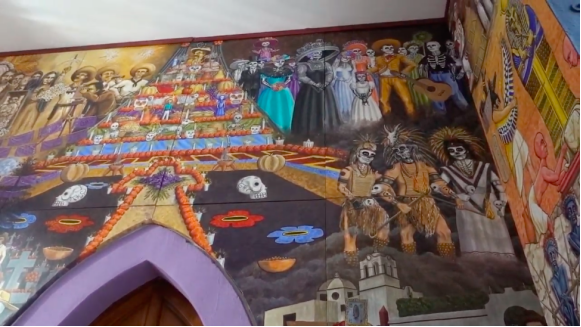
https://youtu.be/0ifR0gLi8yY
6. History and Culture
Foundation
In the framework of the explorations and Spanish conquests of the bordering territories between the Province of Nueva Galicia (today Jalisco) and the Kingdom of Mexico (today Mexico City), a series of settlements had already been established in what is currently the state from Guanajuato, properly the Bajío region. Among them were the Villas of Apaseo and Acámbaro that were installed to supply the travelers; These first Spaniards called the area the Mezquital de los Apatzeos. The Spanish explorers and inhabitants of the settlements were victims of constant indigenous attacks, for which the then Viceroy of New Spain, Luis de Velasco, issued in 1551 a certificate for a garrison to be installed to protect the interests of the crown.
The city was founded on October 12, 1570 when the certificate was issued and Pedro de Villegaz was named Mayor (although of a transitory nature); this being the person in charge of organizing the group of families that, once the foundation application is approved, would be the ones who would elect the first council. The foundation was made at the foot of a mesquite tree characteristic of the area, in what is now called Barrio del Zapote. In that place a group of twenty-seven families received the corresponding lands that they were to inhabit and produce. The first city council was established on January 1, 1571 with Domingo Silva and Juan Freyre as the first elected mayors in history. On that same date, the definitive permission for the foundation of the town was received.
The epicenter of construction for the citadel was the large convent of San Francisco and the subsequent establishment of the Royal Houses in the Plaza de Armas. Later the surrounding farms with the help of the tributaries of the Apaseo and San Miguel rivers became important producers of corn, wheat, chili, pepper, vine and maguey for the mining cities Guanajuato, Zacatecas and San Luis Potosí on whose route it was a pass. obliged.
Almost a century later, on October 10, 1655, the town known and named in the royal reports of the viceroyalty as Zalaya or Celaya, is granted the Royal authorization to possess the title of Very Noble and Loyal City with the right to Blazon; however, the title is not confirmed by King Felipe IV of Spain until December 7, 1658, after paying outstanding debts to the crown.
It was until 1719 that the Jesuits arrived in the then city of Celaya, establishing the temple and convent of the Society of Jesus, now destroyed, and instructing in better techniques for growing the vine. In 1724 the Sanctuary of the Virgin of Guadalupe was erected in the Alameda.
Period of independence
The insurgent army arrived in Celaya on September 20, 1810, camping on the grounds of the Hacienda de Santa Rita. In Celaya there was only a picket of soldiers that did not exceed ten men who expected to be supported by the regiments of Querétaro or Guanajuato, the response of the City Council did not arrive and the decision was made to march on the city on the 20th. Due to a flood From the surrounding rivers, the priest Hidalgo could not enter the city until the following day. Despite this, he sent a letter to the Celaya council asking for their unconditional surrender, noting that he had 70 Spaniards in his custody and that if the city did not surrender, they would be slaughtered.
The city was then peacefully taken on September 21, in the first demonstrations by an insurgent army in Mexico. At the Guadalupe Inn, which is still in the city's Historic Center, Hidalgo was hosted, from where he organized the then precarious insurgent army. Miguel Hidalgo entered the front of the Insurgents together with Ignacio Allende, Ignacio Aldama and Mariano Abasolo, followed by a contingent of more than four thousand men. When they reached the main square, they found some trenches and a few men stationed on the rooftops; the insurgent mass reacted by damaging a few doors, but finally the town hall and the clergy came out to greet them amid the ringing of bells.
The following day, September 22, a review was held in a plain next to the San Antonio chapel where the first appointments were granted by acclamation of those raised, corresponding to Hidalgo as Generalissimo of America, Ignacio Allende Lieutenant Colonel and Ignacio Camargo as Quarterback; These appointments, which were approved by local authorities, are considered the founding events of the current Mexican Army. After these events, Hidalgo and Allende prepared to leave Celaya for the capture of Guanajuato.
After the act where the appointments took place, Hidalgo held a meeting with the City Council, which was restructured in its missing positions that had been occupied by Spaniards, the assembly recognized the charges and adhered to the plan against the Spaniards. Later, Hidalgo issued a letter to Mayor Riaño indicating the reasons for the movement and warning him of the risks of not considering the seriousness of the Insurgent movement.
The response of Mayor Riaño came on the 23rd in the terms of making it clear to Hidalgo that as mayor he would not yield in his duty to defend the interests of King Fernando VII and the Spanish. Hidalgo's immediate determination was then to immediately restart the march towards Guanajuato.
Despite the fact that Celaya was taken by the insurgents, the royalist army, on behalf of the Viceroy, recovered the city and deposited a garrison to repress possible outbreaks of independence. Throughout the War of Independence, the city was a step and site of events linked to the active Bajío region, highlighting having been protected by the Celaya Regiment for just over two years commanded by Agustín de Iturbide.
It was not until 1822, months after the consummation of Independence and given the popularity of Agustín de Iturbide in proclaiming sovereignty, that the Celaya regiment urged, on the night of May 18, shouting "Long live Agustín de Iturbide, emperor of Mexico! ". The news did not take long to reach Mexico City, adding to the fact that Congress discussed the proposal and accepted the eventual coronation of Agustín de Iturbide.
19th Century
American intervention in Mexico
During the US intervention in Mexico, the Celaya regiment, under the command of Gral. Pedro Ampudia, was the first Guanajuato regiment to fight the North American invaders in the battles of Palo Alto and La Resaca de Guerrero, later forming the First and Second Celaya regiment at the same time as helping the auxiliary regiment of Guanajuato.
Second French intervention in Mexico
In 1863 Mexico suffered the Second French Intervention, a period during which the French occupation troops invaded the Bajío beginning with San Miguel de Allende advancing to Celaya. In December 1863 French troops occupied Celaya with the approval of the conservative sector of the city. In February of the following year, the authorities agreed to draw up an act in which the happiness of Celayense was expressed for the acceptance of Archduke Maximiliano de Habsburg to the Mexican imperial throne and the ceremony by which homage would be paid to the new emperor is described; the acts would consist of making honor guards to his portrait, placing the imperial coat of arms in the center of the city and lighting the Municipal Palace in "the most elegant way possible". The emperors landed in the port of Veracruz on May 28, 1864, a commission received them and not the entire town as they expected. In June, the city of Celaya joined the celebrations for the arrival of Maximiliano and his wife Carlota to Mexico City, a series of public and religious events were programmed in which a large part of the people of Celaya participated. Months later and already settled in the capital, the emperor decided to organize a trip to some regions of the country, he stayed in the city of Querétaro and, given the geographic proximity of his Imperial Highness, Celaya authorities sent messages, letters and influence to get a visit from the sovereign.
On August 23, 1864, the Second Emperor of Mexico was received in this city by civil authorities on the bridge of the Rio Laja along with his imperial guard. A music band followed the procession until they reached the "bridge of the monas" where hundreds of people were waiting for them, the church bells rang and the people from Celayo cheered his Majesty, says historian Luis Velasco y Mendoza.
During his stay in Celaya, he had the opportunity to visit the Temple of Carmen, the State Civil College, based in San Francisco, and was pleasantly surprised to learn that this institution taught the decimal metric system, when in Europe this knowledge they were relatively new; Other visits that impacted the Emperor were the prison and the Hospital de San Juan de Dios, where he observed the difficult conditions in which the prisoners and the sick were found, whom he decided to help as much as possible by donating a sum of money. The next day he concludes his visit, he says goodbye to the people of Celaya, thanks them for their hospitality and promises to return accompanied by Empress Carlota and continues his journey through the Bajío area.
When the French troops left Mexico and Emperor Maximilian of Habsburg had the need to flee from Mexico City to the Bajío, he was besieged in Querétaro by the resistance in Celaya and surrounding municipalities advocated by Mariano Escobedo.
Porfiriato
After the success of the Tuxtepec Revolution led by Porfirio Díaz against Sebastián Lerdo de Tejada, Porfirio Díaz invaded Celaya on December 29, 1876 and from Salamanca appointed Francisco Z. Mena as governor of Guanajuato.
Under the governorship of Francisco Z. Mena in Celaya the railroad was installed that would communicate in its first stage to the Bajío being Celaya and León their last destinations. Already in 1904 the two largest railways of the Republic, the Central and the National, crossed the city, connecting it with the main cities of the country.
The industry in Celaya grew due to the fact of having the advances of electrical energy, the railroad and the telegraph; companies and factories of alcohol, oil and corn derivatives were installed in the city, in addition to giving a boost to its agricultural production.
With regard to education, in this period one of the four model schools of the state was inaugurated in Celaya, where positivist education promoted by the federal government was imparted. In addition, in this period, the Bola de Agua de Celaya was built and inaugurated, which is a huge reservoir of water to supply the city and that still exists, which was manufactured by a German engineer in 1910.
Revolutionary period
During the revolutionary era in the city there were a series of important and bloody confrontations known as the Battles of Celaya, between the Villista forces with 30,000 men and the Obregonistas with 15,000 during April 13, 14 and 15, 1915, resulting in victorious the Obregonistas.
In the Battle of Celaya, in early April 1915, it was the second meeting between the two generals. In principle, Pancho Villa launched waves of bombs that at times drove the enemy back. But Obregón was able to overcome the advantage and little by little he beat Villa in their second match, on the night of April 6.
Obregón wrote to President Venustiano Carranza confident of the assurance of his victory, but Villa took the opportunity to fight again on April 13, where he was defeated in a matter of a few hours. He withdrew to the Bajío, and from there wrote a letter asking Obregón not to pursue his soldiers, as they were hungry and could not defend themselves. After that, both armies had small clashes in the lower area.
On the morning of July 3, Obregón went out with some members of his escort to tour the main courtyard of a hacienda in Santa Ana del Conde, Guanajuato, from which they had received reports of Villar attacks. Suddenly, a guard of soldiers in the service of Francisco Villa came out and attacked Obregón's group of men with grenades, who was wounded by the explosion, instantly losing his right arm. When they saw that they achieved their mission, the Villistas returned to their camp. Obregón, as he related years later to Vicente Blasco Ibáñez, felt deep psychological pain due to the loss of his arm and tried to commit suicide by shooting himself to the temple with a pistol, which was unloaded. A few hours later he regained consciousness and was informed of the capture of León by Villa's forces. Due to his landslide victory in Celaya, he became known by the alias "El maco de Celaya." A few days later, he decided to leave Celaya and soon took Saltillo, Aguascalientes, and Torreón. Upon reaching Sonora, he expelled the Villistas from the state territory and established peace pacts with the Yaqui army.
The Flood
In August 1973, given the heavy rains and the mismanagement by the authorities of the Ignacio Allende dam, the Laja river overflowed, flooding part of the city, particularly the "Francisco Eduardo Tresguerras", "Insurgentes" colonies. "," El Zapote "and" Alameda ", registering considerable material damage.
The Celaya explosion
On Sunday September 26, 1999, also known as Black Sunday, the biggest tragedy in the city occurred to date, when a store that stored large quantities of fireworks exploded.
In total there were 3 explosions, the first due to the powder from the pyrotechnic fires and the second largest was that of a 1000-liter LP gas tank that caused the highest number of deaths.
The store was located in an important commercial area with a lot of traffic on Antonio Plaza avenue, on which the Celaya bus station is located. That day, 71 dead and 438 injured were registered, among which were three paramedics from the Red Cross, a paramedic from S.O.S rescue, elements of the "Corps of Voluntary Firefighters of Celaya" as well as one from the Amber Cross.
The rise of Celaya
Once the post-revolutionary period was over, as of 1960 Celaya was connected by multiple highways and modern highways, airports and railways to distribute its full agricultural, industrial, commercial and livestock boom, according to the so-called Guanajuato Plan. This growth, coupled with the prosperity of the region, has earned it the designation of being known as the "Golden Gate of the Bajío".
With this, the commercial diffusion of Celaya spread throughout the country; It even began to become famous for a traditional dessert for family consumption whose names seem indissoluble: the Cajeta from Celaya. This candy is made with goat's milk thickened when boiling with brown sugar, with a mixture of fruits (raisins, nuts, pine nuts) and which was packaged in wooden boxes, which is where its name comes from.
By being located in the industrial corridor of Bajío Celaya, it has completely entered industrialization, leaving its crafts to an industrial process and installing white goods, accumulators, cookies, cajeta, and commercial and food packing factories in its territory; without ceasing to be one of the most important agricultural and livestock bastions in the state. In 2012, the construction of the Honda car assembly plant began, which had begun directly employing 3,500 people, giving rise to the construction of a series of industrial parks in the metropolitan area of Celaya (in 2010 the INEGI named it Metropolitan Area together with Apaseo el Grande and Villagrán).
7. Contact Information
City Mayor: Elvira Paniagua Rodríguez
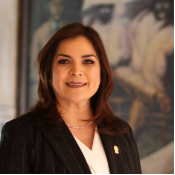
Contact number: +52 (461) 618 7100
Govt. Office Address: Portal Independencia #101, Zona Centro, CP. 38000, Celaya, Gto.
Instagram: https://www.instagram.com/elvirapaniaguardz
FB: https://www.facebook.com/elvira.paniaguarodriguez
Website: https://www.celaya.gob.mx/cya
E-mail: elvira.paniagua@celaya.gob.mx
